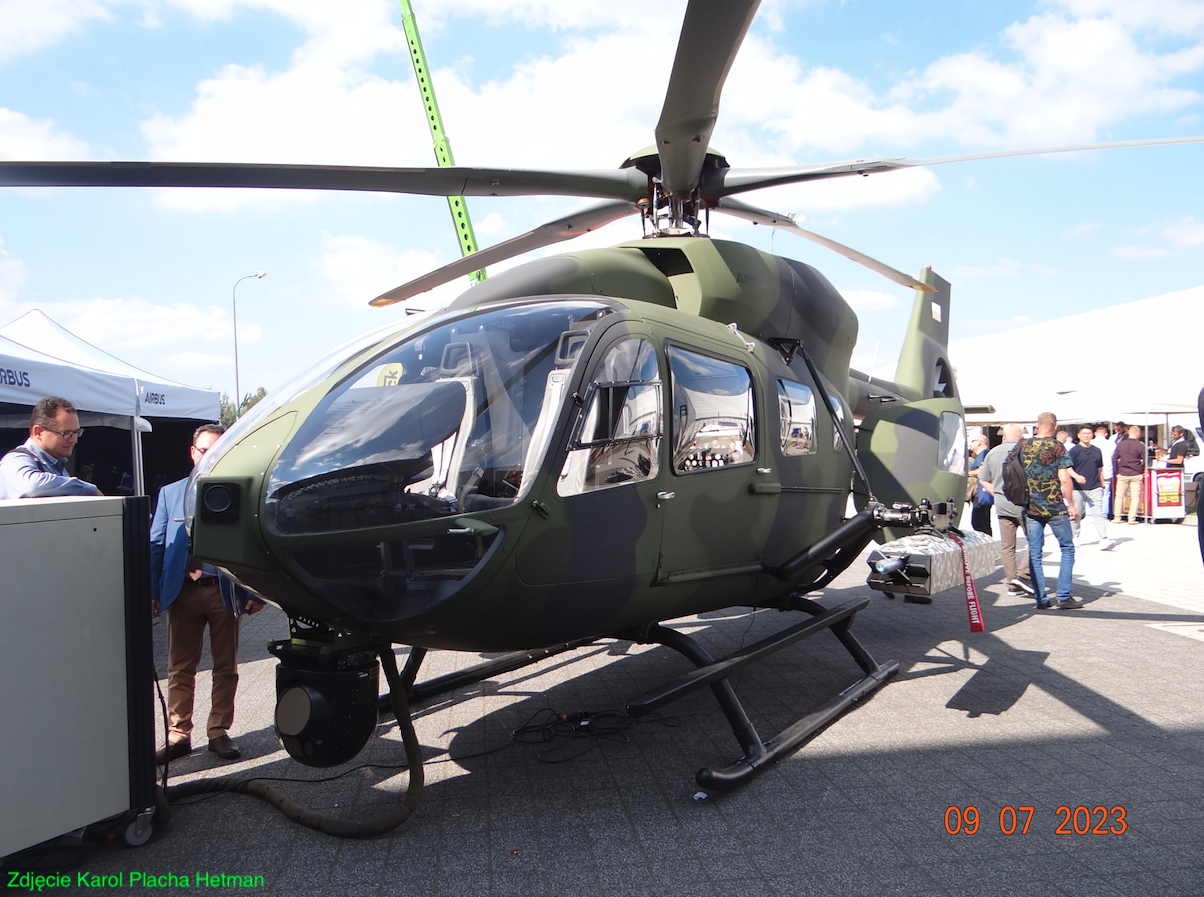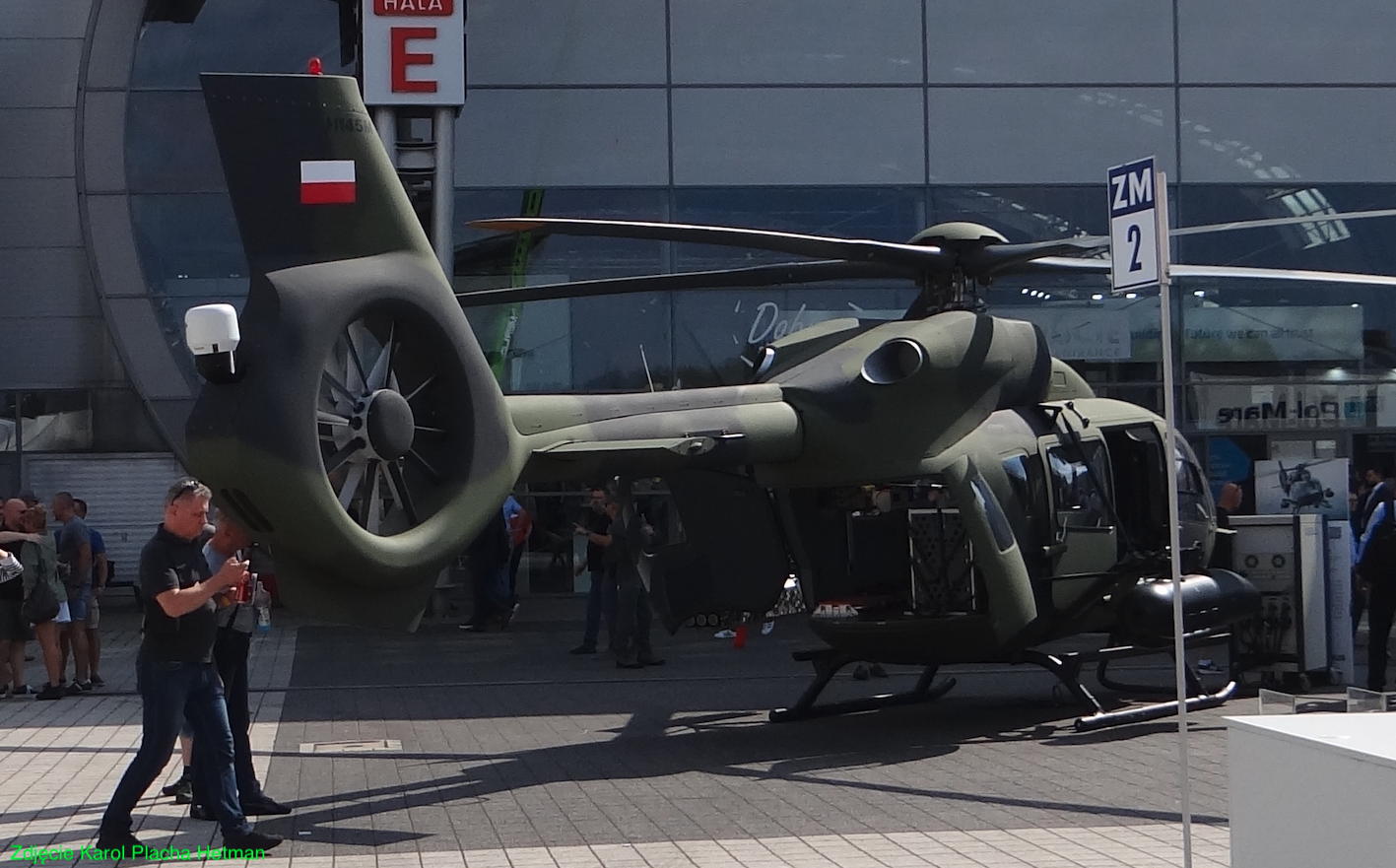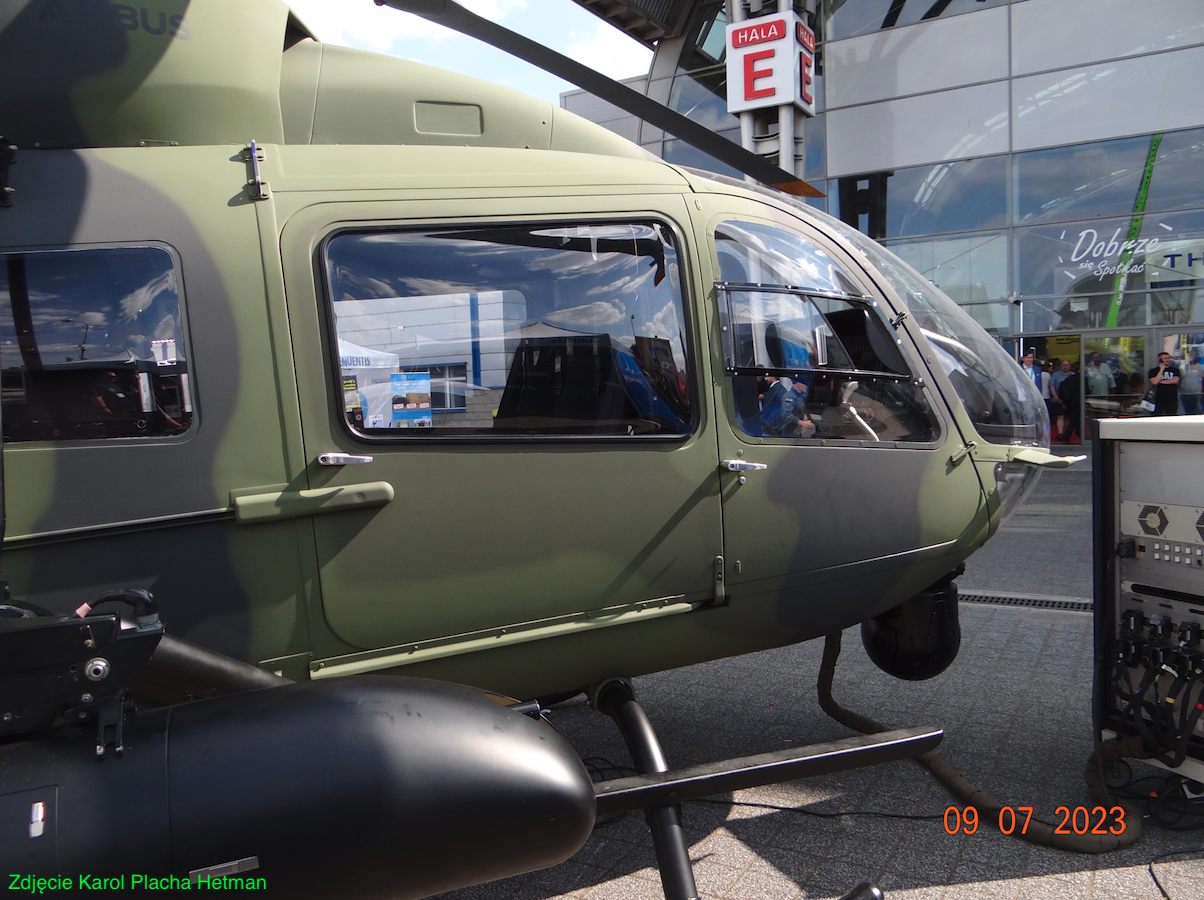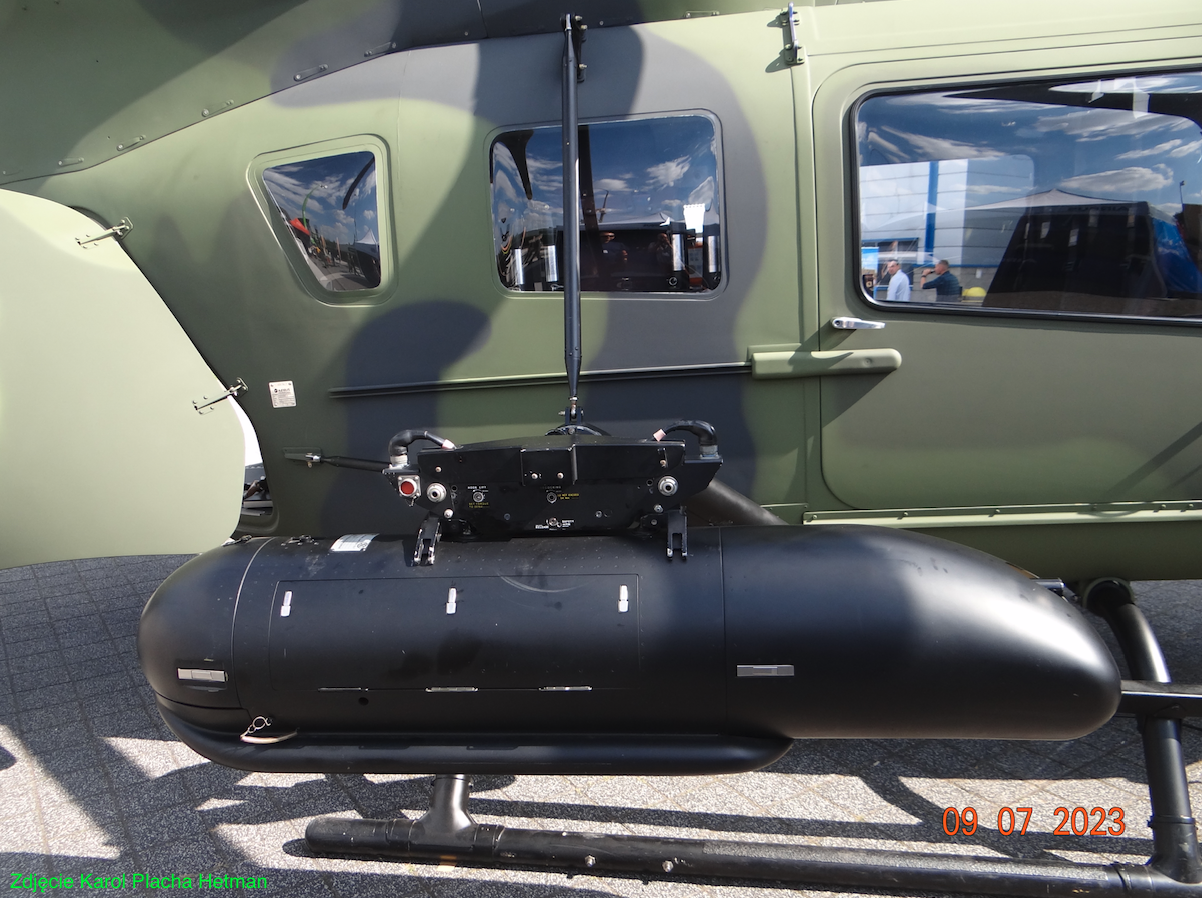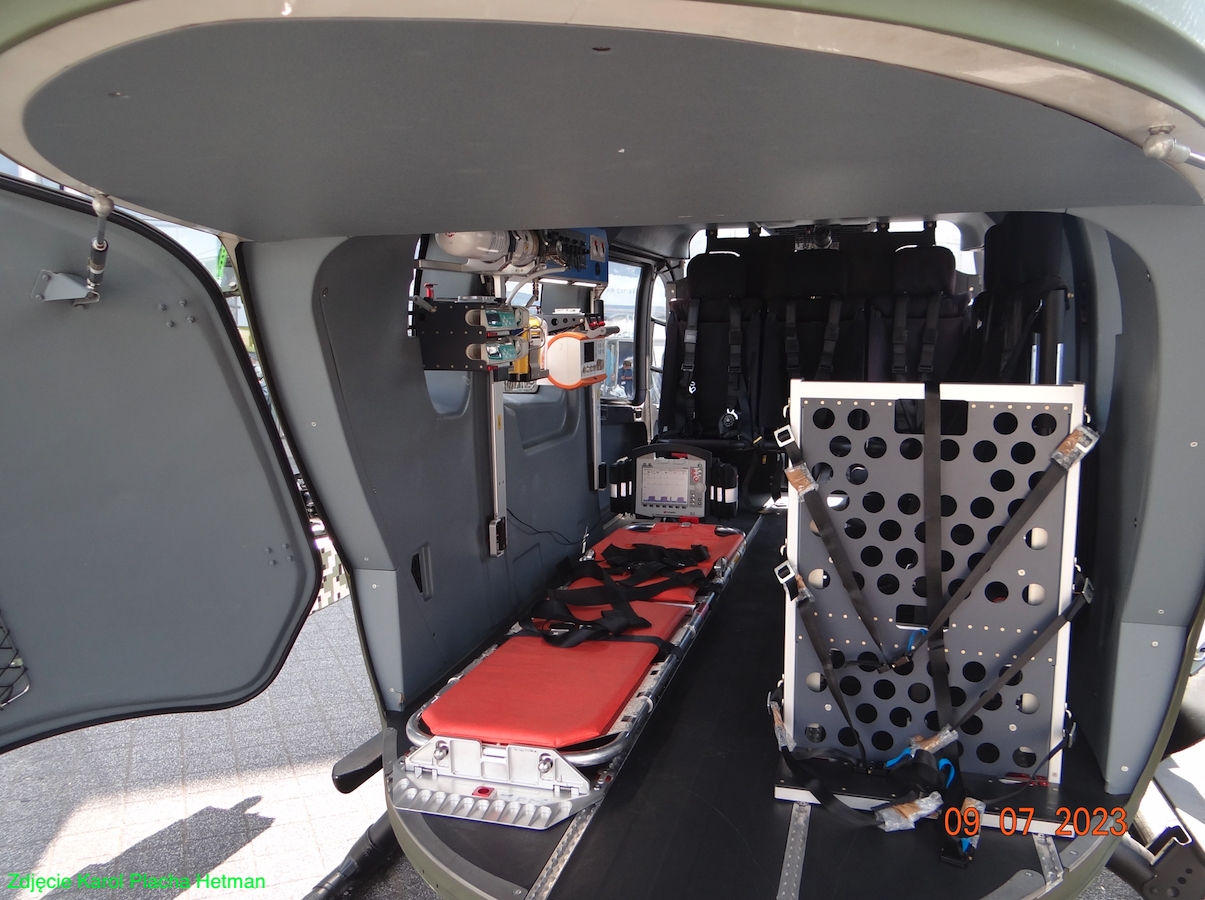Kielce 2023-09-10
Airbus Helicopters H-145.
Airbus Helicopters H-145 is a light, twin-engine, multi-role helicopter, currently produced by Airbus Helicopters. To begin with, it should be written that the helicopter has several markings, which is closely related to organizational changes in the European helicopter industry. Initially, the helicopter was designated BK-117, then Eurocopter EC-145, and currently Airbus Helicopters H-145.
In the 1990s, MBB and Kawasaki Aerospace Company started working on the helicopter. Later, MBB became part of Eurocopter and then Airbus Helicopters. The new helicopter was designated BK-117, i.e. Bolkow – Kawasaki. The helicopter prototype was first flown on June 12, 1999. Then the helicopter was designated Eurocopter EC-145, and in 2015 it was finally designated Airbus Helicopters H-145.
Airbus Helicopters H-145 is a light helicopter powered by two turbine engines. The helicopter layout is classic, i.e. the Sikorsky layout. The helicopter shares many elements with the original BK-117 and EC-135. The designers’ main goal was to increase the helicopter’s payload and range. Efforts were made to reduce vibration and noise. Additionally, they wanted to reduce operating and maintenance costs.
In December 1997, the H-145 helicopter (then BK-117 C2) was certified and selected by France as the helicopter for coastal defense and civil guard. A total of 31 EC-145 helicopters were ordered to replace the worn-out Aérospatiale Alouette III helicopters. The first EC-145 made its first flight in Donauwörth, Germany, on June 12, 1999. The EC-145 helicopter received FAA certification in January 2002.
In 2001, Eurocopter and Kawasaki concluded an agreement for the independent production and sale of helicopters. The cooperation was limited to research and development work. The Kawasaki company left the designation BK-117 C2 and sells the helicopters on the Asian market. Eurocopter sells EC-145 helicopters worldwide, under the designation EC-145, and since 2015, under the designation H-145.
In 2011, Eurocopter introduced an improved EC-145 model, designated EC-145 T2. The EC-145 T2 helicopter has increased performance thanks to the use of new turbine engines, marked Arriel 2E, which have been equipped with a Full Authority digital control system. Eurocopter’s Fenestron system was introduced in the tail rotor design. New avionics, glass cockpit and 4-axis autopilot were introduced. In April 2014, the EC-145 T2 helicopter received European certification, and in October 2014, it received FAA certification.
The helicopter is produced for the military and civilian markets. The helicopter can transport up to 9 people, including the pilot, and can be used for medical transport (EMS), search, rescue, and paramilitary tasks. Military variants are produced under various designations, for example H-145 M or UH-72. In the army, helicopters are used for training, transport, logistic tasks, medical evacuation, reconnaissance, patrolling and even for attack tasks.
In 2022, the H-145 helicopter was offered to Poland as a successor to the PZL Mi-2 helicopters.
The structure of the H-145 helicopter.
The helicopter was built in a classic configuration, with a rotor equipped with 5-composite blades, and Fenestron, developed by Eurocopter, was used in the tail boom. The helicopter has a skid landing gear. The helicopter’s fuselage is equipped with double doors at the back and two doors on the sides. The cargo hold door slides back to allow use of the winch.
The helicopter presented in the photos was marked as H-145 M. The cargo hold equipment is typically medical. Light weapons were suspended on external suspensions. An opto-electronic head is installed under the helicopter’s fuselage.
Data T-T H-145:
Crew: 2 people. Cargo capacity up to 9 people or 1,793 kg (3,953 lb) of cargo. Length 13.03 m (42 ft 9 in). Height 3.45 m (11 ft 4 in). Curb weight 1,792 kg (3,951 lb). Gross weight 3,585 kg (7,904 lb). Fuel tank capacity 723.0 kg (1,593.9 lb). Powertrain: 2 Turbomeca Arriel 1E2 turbine engines, each with a power of 550 kW (740 HP). Main rotor diameter 11 m (36 ft 1 in). Cruising speed 246 km/h (153 mph, 133 knots). Range 680 km (420 mi, 370 nautical miles). Hovering range 855 km (531 miles, 462 nautical miles). Service ceiling 5,240 m (17,190 ft). Rate of climb 8.1 m/s (1,590 ft/min).
Written by Karol Placha Hetman

